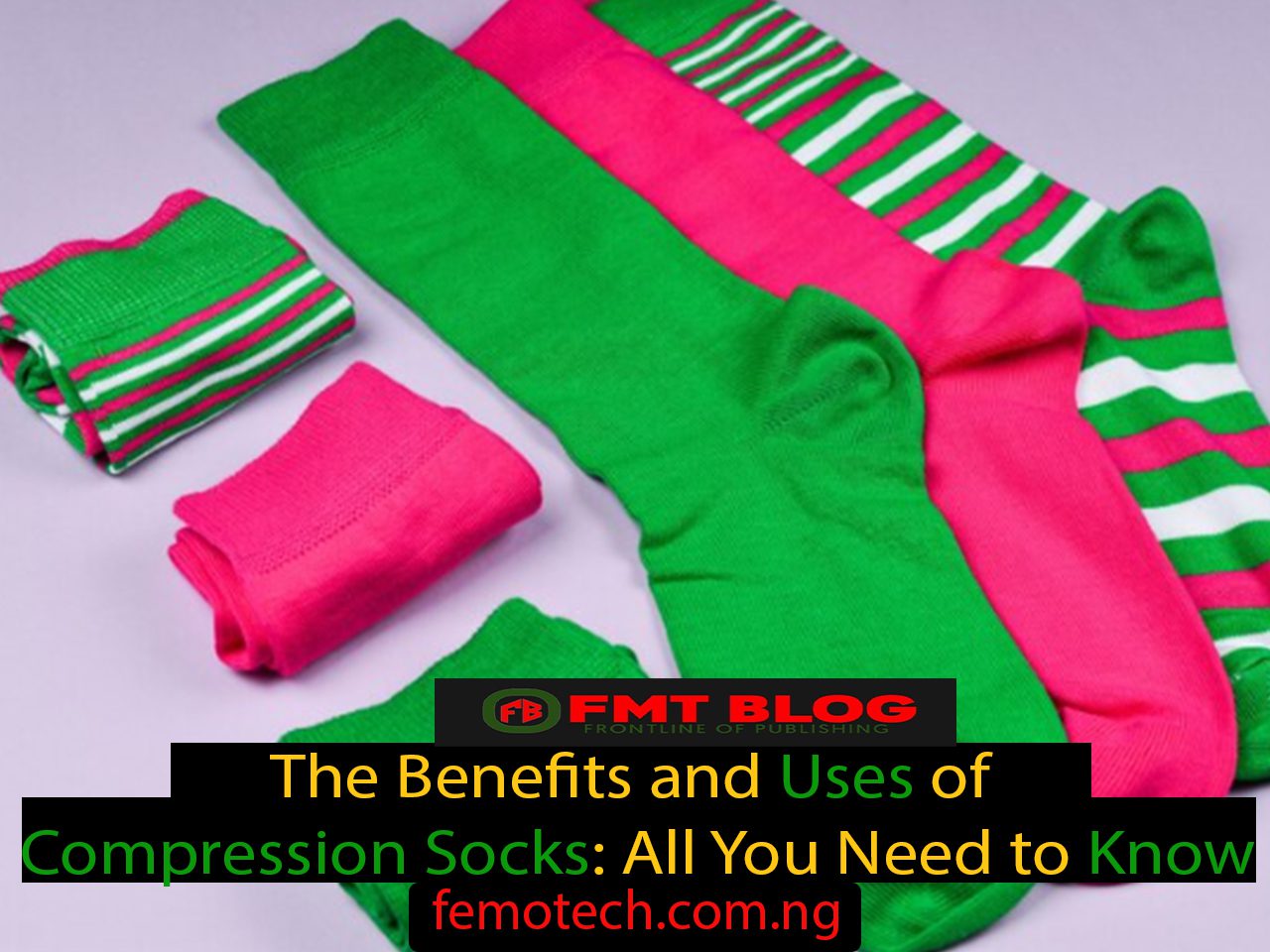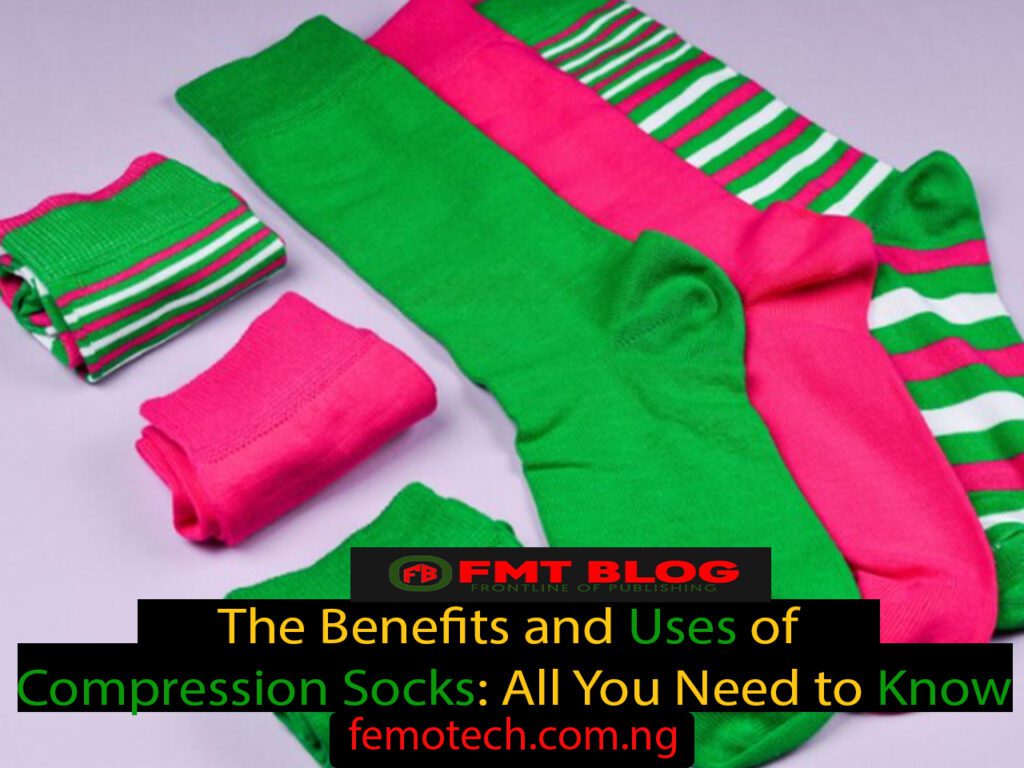

Introduction
Over the past few years, compression socks have become super popular. You might see athletes wearing them or people who travel a lot. Even people who just want to feel a little more comfortable throughout the day are starting to wear them. But what exactly are compression socks, and how can they help you?
What Compression Socks
Compression socks are like stretchy socks that gently hug your legs and ankles. This squeeze is strongest at your ankle and gets looser as it goes up your leg, a bit like a hug that loosens up as it goes higher. This special design helps your blood flow more easily back up to your heart from your legs. It also helps to squeeze out any extra fluid that might be building up in your legs, making them feel puffy or swollen.
In simple terms, compression socks are specially designed socks that gently squeeze your legs and ankles. This squeeze is strongest at your ankle and slowly gets looser as it goes up your leg. This design helps blood flow in your legs move better and reduces puffiness in your ankles and legs. This can lead to a whole bunch of benefits for your overall health and how you feel.
Compression socks come in a variety of lengths, from ankle-high to thigh-high, depending on your needs. They are typically made from nylon, spandex, or a combination of both materials. This blend provides a snug fit that applies targeted pressure throughout your leg.
Benefits of Compression Socks
Compression socks offer a range of benefits, making them a valuable tool for a variety of people:
Improved Circulation: Sitting or standing for long periods can make it harder for blood to flow up from your legs back to your heart. This can cause your legs to feel tired, achy, and swollen. Compression socks help to squeeze your legs gently, which helps blood flow back up to your heart more easily. This can help to reduce fatigue, aches, and swelling in your legs, leaving them feeling lighter and more refreshed.
Enhanced Performance: Athletes wear compression socks because they can help them run, jump, and play better. Compression socks can help muscles get the oxygen they need to work harder, which can help athletes perform at their best. They can also help muscles recover faster after a workout, so athletes feel less sore and stiff the next day. This can be especially helpful for athletes who train or compete very often.
Reduced Swelling: Some people experience swelling in their legs because of a condition called lymphedema or varicose veins. Lymphedema is a buildup of fluid that happens when the body’s lymphatic system isn’t working properly. Varicose veins are twisted, enlarged veins that can cause pain, achiness, and swelling in the legs. Compression socks can help with these conditions by gently squeezing the legs and ankles. This squeezing helps to move extra fluid out of the legs and back up towards the heart, reducing swelling and discomfort.
Faster Recovery: After a workout, your muscles get tiny tears. This is a normal part of the muscle-building process. Compression socks can help these tiny tears heal faster by squeezing your legs gently. This squeezing helps blood flow through your legs better, which brings oxygen and important nutrients to your muscles. These nutrients help your muscles rebuild and repair themselves, which means you’ll feel less sore and stiff the next day. Compression socks can also help to reduce inflammation in your muscles, which can also contribute to soreness and stiffness.
Travel Comfort: Sitting for long periods on airplanes or trains can be uncomfortable and make your legs feel swollen. This is because sitting for a long time can make it harder for blood to flow from your legs back up to your heart. Compression socks help to prevent this by gently squeezing your legs. This squeezing helps blood flow through your legs more easily, which can help reduce swelling and discomfort. So, if you’re going on a long trip, wearing compression socks can help your legs feel better and prevent them from getting swollen.
Who Can Benefit from Compression Socks?
Compression socks are not only for sportsmen or those with particular medical conditions. Anyone who wants to provide their legs with some more assistance may find them useful. Compression socks can help your circulation improve and lower leg swelling if you spend extended lengths of time seated or standing at work. Those who travel frequently may also find them useful since long stretches of sitting on trains or airlines can cause leg discomfort. Pregnant women may also find compression socks useful since pregnancy causes leg swelling. Of course, compression socks remain an excellent choice for athletes and anyone with lymphedema or varicose veins as well.
Finding the Perfect Fit
With so many compression socks on the market, choosing the right pair is crucial. Here are some tips to ensure you get the perfect fit:
- Talk to your doctor first: Before you start wearing compression socks, it’s a good idea to chat with your doctor. They can help you decide if compression socks are right for you and what level of compression you might need. This is especially important if you have any health conditions, such as diabetes or heart problems.
- Consider the level of compression: Compression socks come in different levels of tightness, measured in mmHg (millimeters of mercury). When you’re first starting out, it’s usually best to choose a lower compression level, somewhere between 15 and 20 mmHg. This is a good balance of providing some gentle squeezing action to improve circulation without feeling too constricting or uncomfortable. If you have a medical condition or specific needs, your doctor may recommend a higher level of compression.
- Choose the right size and length: Compression socks should fit snugly around your legs, but they shouldn’t be so tight that they dig in or cause any discomfort. To ensure a proper fit, you’ll need to measure your calf and ankle circumference. Most compression sock manufacturers will have sizing charts on their website or packaging to help you find the right size based on your measurements. In general, you’ll want to measure the widest part of your calf and the narrowest part of your ankle. Once you have your measurements, you can compare them to the sizing chart to find the corresponding size for the compression socks you’re interested in.
- Material matters: Look for compression socks made from fabrics that breathe well and wick away moisture. This means the material will allow air to circulate through the fabric, helping to keep your feet cool and dry. Breathable materials like nylon are a good choice, and merino wool is another option that is naturally moisture-wicking and also helps regulate temperature.
Follow us on socials → Telegram | X/Twitter | Facebook | WhatsApp |WhatsApp Channel |Mobile App
Conclusion
Improving your leg health and general well-being can be greatly enhanced by compression socks. Knowing their advantages and selecting the correct pair will help you feel the enhancement that compression socks can provide!



